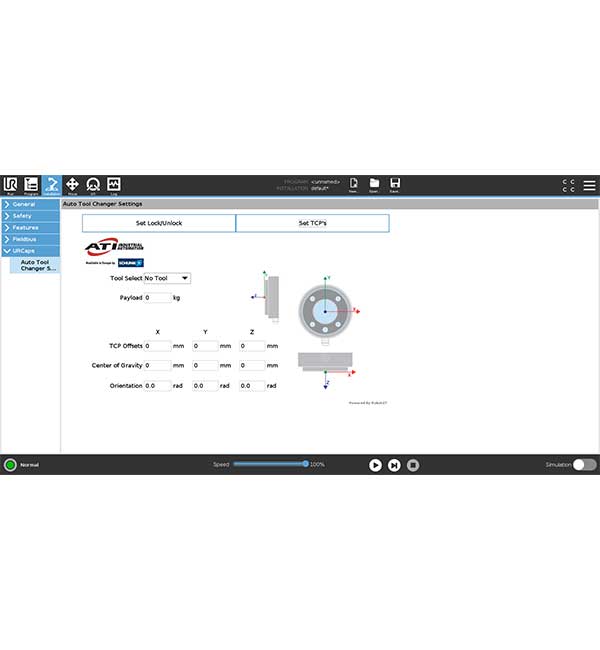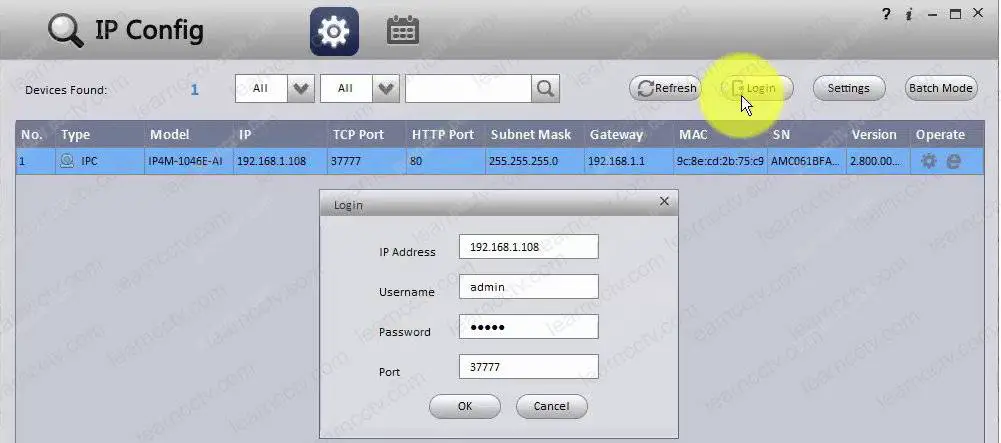
While human-level dexterity might not be the goal of developers and suppliers - surpassing it is - new materials and types of grippers are making robots more reliable and flexible than ever. Major vendors of “automatic manual” tool changers include ATI Industrial Automation, Applied Robotics, SAS Automation, Schunk, and Stäubli. Rather than trying to use a single end effector to do everything, tool changers are designed to make it easier to quickly swap out robotic grippers.
#ATI TOOL CHANGER DEFAULT IP INSTALL#
Much of the attention in the collaborative robotics space has been on developing end effectors that are as easy to install and use as the robot arms they’re mounted on. For example, Quebec City-based Robotiq has grown not only by selling products, but also explaining the value of such combinations. Increasingly, robotics vendors are offering suites of solutions that include grippers, sensors, and software. Several companies, such as Destaco, offer customizable end effectors to work with specific items or materials.

Environmental contaminants and patterns of contact and wear are other factors to note. Shoeboxes are much easier to move than screws, a large pallet, or shrink-wrapped shirts, for example.Īs with robots in general, cobot EOAT designers and users should consider the competing demands for cycle time, torque, and shape and force limitations for safety. Robot grippers must be appropriate for the size, weight, and rigidity of the objects they handle, as well as the required precision. Better sensing and controls, lighter materials, and more efficient use of space and power continue to make grippers an area of robotics worth watching. Advances in prosthetics have paralleled the development of electromechanical and pneumatic grippers. The makers of robotic grippers have designed their products to work with multiple models of industrial and collaborative robot arms. Keynotes | Speakers | Exhibitors | Register Even more specialized, in terms of performance requirements, are end-of-arm tools (EOATs) for undersea exploration, telesurgery, and hazardous materials handling. In addition to consumer packaged goods, markets for robotic grippers include machine tending, pharmaceuticals, plastics, and agriculture and food processing. Industrial robots could use parallel or rotary grippers for fast, repetitive handling of identical parts, but cobot users need flexibility and safety over throughput. With the rise of collaborative robot arms, or cobots, machine manipulation has diversified to handle a widening variety of objects. Human-level manipulation of various objects is a difficult technical challenge, and robotics developers and vendors have responded with a range of solutions.įrom claw, parallel, and rotary grippers to bellows, magnetic, and vacuum grippers, robotic manipulation has evolved to meet the needs of industries including automotive and electronics manufacturing and food processing.
#ATI TOOL CHANGER DEFAULT IP MANUAL#
Robots have used multiple types of grippers for years, but the push for more manual dexterity has become more urgent because of rising demand from e-commerce order fulfillment and other applications. It creates an internal air supply with self-contained airflow and has two individual vacuum channels.

If you are not fond of commands then you can change IP address from GUI.The VG10 vacuum grippers don’t use external compressed air to create suction. Type “ ipconfig /all” to verify that static IP address, subnet mask, default gateway and DNS server IP is assigned. Type “ Exit” to exit from netsh interface ipv4 console.Ĩ. Here, “Ethernet0” is the name of our network adapter and 192.168.1.10 is the IP of DNS.ħ. Type a command “ set dnsservers “Ethernet0” static 192.168.1.10 primary” to define the primary DNS. Moreover we need to define DNS information. In addition to IP we are also assigning Gateway to this computer after subnet mask we can define the gateway which is 192.168.1.1 in this example.Ħ. 192.168.1.10 is an IP address that we want to assign and 255.255.255.0 is a subnet mask. As we are assigning static IP address therefore we need to mention an IP address and a subnet mask.

In this command “Ethernet0” is the name of our Ethernet Adapter. Then type “ Interface IP” this will change the console to “ netsh interface ipv4“.ĥ. To assign an IP to our computer type “ Netsh“.


 0 kommentar(er)
0 kommentar(er)
